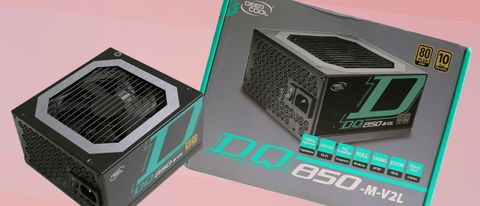Why you can trust Tom's Hardware
Protection Features
Check out our PSUs 101 article to learn more about PSU protection features.
|
Protection Features | |
|
OCP |
12V: 90.2A (127.94%), 12.077V 5V: 29.1A (145.5%), 5.015V 3.3V: 29A (145%), 3.258V 5VSB: 3.8A (152%), 5.007V |
|
OPP |
1102.59W (129.72%) |
|
OTP |
✓ (143°C @ 12V Heat Sink) |
|
SCP |
12V: ✓ 5V: ✓ 3.3V: ✓ 5VSB: ✓ -12V: ✓ |
|
PWR_OK |
Proper Operation |
|
NLO |
✓ |
|
SIP |
Surge: MOV Inrush: NTC Thermistor & Bypass Relay |
The over current protection at +12V along with over power protection is configured correctly. This doesn't apply, though, to the minor rails which are close to 145%, compared to their nominal levels. There is no need for such high power levels on these rails and at some point, PSU manufacturers should realize it. The other protection features have normal operation.
DC Power Sequencing
According to Intel’s most recent Power Supply Design Guide (revision 1.4), the +12V and 5V outputs must be equal to or greater than the 3.3V rail at all times. Unfortunately, Intel doesn't mention why it is so important to always keep the 3.3V rail's voltage lower than the levels of the other two outputs.

DC Power Sequencing Scope Shots


The 3.3V rail is lower than the other two in all tests we conducted, so there are no problems here.
Cross Load Tests
To generate the following charts, we set our loaders to auto mode through custom-made software before trying more than 25,000 possible load combinations with the +12V, 5V, and 3.3V rails. The deviations in each of the charts below are calculated by taking the nominal values of the rails (12V, 5V, and 3.3V) as point zero. The ambient temperature during testing was between 30 to 32 degrees Celsius (86 to 89.6 degrees Fahrenheit).
Load Regulation Charts

Load Regulation Charts


Efficiency Chart

Ripple Charts
The lower the power supply's ripple, the more stable the system will be and less stress will also be applied to its components.

Ripple Suppression Charts



Infrared Images
We apply a half-load for 10 minutes with the PSU's top cover and cooling fan removed before taking photos with a modified FLIR E4 camera able to deliver an IR resolution of 320x240 (76,800 pixels).

IR Images






The hottest areas are near the bridge rectifier and the voltage regulators that handle the minor rails. The temperatures are not high, but CWT was forced to use an aggressive fan speed profile to keep as cool as possible the internals, to ensure that the low-quality FETs will outlive the provided warranty. The latter is super-long for the low-grade FETs under mid to severe operating conditions. Only time will reveal more on this platform's reliability.
MORE: Best Power Supplies
MORE: How We Test Power Supplies
MORE: All Power Supply Content
Current page: Protection Features, DC Power Sequencing, Cross-Load Tests and Infrared Images
Prev Page Load Regulation, Hold-Up Time, Inrush Current, Efficiency and Noise Next Page Transient Response Tests, Timing Tests, Ripple Measurements and EMC Pre-Compliance TestingAris Mpitziopoulos is a Contributing Editor at Tom's Hardware US, covering PSUs.

The Raspberry Pi RP2040 Hackbat is an open source swiss army knife pen testing tool

Intel's next-gen desktop CPUs have reportedly leaked — Arrow Lake Core Ultra 200 series have same core counts as Raptor Lake Refresh, but fewer threads

Sabrent debuts 5GB/s Rocket Nano 2242 Gen 4 SSD — a good fit for Lenovo Legion Go, laptops, and NUCs
